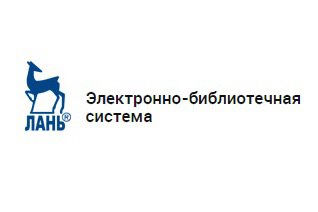| УДК 330.15 | DOI: 10.21440/0536-1028-2020-7-63-72 | Download |
Relevance. In the recent decades a lot of countries around the world are increasingly using the economic appraisal of the territory’s natural capital. The appraisal represents the mechanism which makes it possible to reasonably select the options for the natural capital development with the view of social-economic development being favourable to human life activity and preserving ecological balance at the same time. The appraisal’s reliability requires specified structure of the natural capital and the implemented functions.
Research aim is to specify the architecture of the natural capital and functions implemented by its components.
Methodology and methods. The theory and the methodology of the natural capital and the theory of ecosystem services were the theoretical basis for the research. The research contained data generalization and analysis, classification and grouping, comparative analysis, and qualitative analysis.
Research results. The content of the natural resources potential with available resources and potential reserves was studied. The possibility of transferring from potential reserves (off-balance and written-off reserves and technogenic mineral bodies) to accessible mineral resources which form the mineral resource base was shown by the example of the mineral raw potential. Universally recognized ecosystem services classifications were analyzed and recommendations were made aimed at improving such a classification for further universal application. All components of the natural environment are considered from the position of ecosystem services possibility. It has been determined that they are provided by both biotic and abiotic components (such functions reside even in the lithosphere). The authors’ position has been formulated regarding eco services as ecological resources. Anthropocentric character of the approach has been proven in the definition of the natural capital, which is only considered from the position of the “income flow” for the sake of human, while its preservation is conditioned by the need for its permanency. The essence of resource and ecosystem approach is revealed when building the structure of the natural capital. It is recommended to use a combination of the options based on the principles from the present article.
Summary. Natural capital appraisal reliability required unambiguity in constructing the natural capital and the implemented functions. It is proposed to use the combined structure of the natural capital which reflects the implemented resource and ecosystem functions.
Key words: mineral resources; natural resources potential; ecosystem services; natural capital; structure;
functions.
REFERENCES
1. Kirillov S. V. Natural resources use. St. Petersburg: Khimia Publishing; 1985. (In Russ.)
2. Glushkova V. G., Simagin Iu. A. (eds.) Regional economics. Natural resources and ecological fundamentals. Moscow: Kronus Publishing; 2012. (In Russ.)
3. Nezameikin V. N. Integrated natural resources management. Moscow: Ekzamen Publishing; 2006. (In Russ.)
4. Iandyganov Ia. Ia. Natural resources potential of the region (appraisal and use). Ekaterinburg: USUE Publishing; 2000. (In Russ.)
5. Shimova O. S., Sokolovskii N. K. Economics of nature use. Moscow: Infra-M Publishing; 2009. (In Russ.)
6. Kurnyshev V. V., Glushkova V. G. Regional economics: theoretical basis and research methods. Moscow: KNORUS Publishing; 2011. (In Russ.)
7. Kosolapov O. V. Rationale for ecological-economic sustainability of subsoil use. Abakan: KhSU Publishing; 2016. (In Russ.)
8. Tatarkin A. I. (ed.) Developing consistency in natural resources development in northern understudied territories. Ekaterinburg: IE UB RAS Publishing; 2015. (In Russ.)
9. Reimers N. F. Natural resource management: glossary. Moscow: Mysl Publishing; 1990. (In Russ.)
10. Plisetskii E. A. Russia’s commercial geography. Moscow: Mysl Publishing; 1990. (In Russ.)
11. De Grott R. Enviromental functions as unifying concept for ecology and economics. The Enviromentalist. 1987; 37(2): 105–109.
12. Westman W. How much are nature’s services worth? Science. 1977: 960–964.
13. Daily W. Nature’s services: social dependence on natural ecosystems. Washington: Island Press, 1977. 392 p.
14. “Economics of ecosystems and biodiversity” project. Recognition of environmental economics. Synthesis of approach, conclusions, and recommendations of TEEB. Moscow: Izd-vo Tsentra okhrany dikoi prirody Publishing; 2010. (In Russ.)
15. Bobylev S. N., Zakharov V. M. Ecosystem services and economics. Moscow: Institute of sustainable development. Center for Russian Environmental Policy. Civic Chamber of RF; 2009. (In Russ.)
16. Millennium ecosystem assessment. Ecosystems and human well-being. Syntheses Report. Island press. Washington DC; 2005. (In Russ.)
17. “Economics of ecosystems and biodiversity. Prospects of Russia and CIS countries participation” 2010. Available from: https://biodiversity.ru/programs/international/teeb/briefing.html [accessed 01 August, 2020].
18. National strategy of preserving biodiversity of Russia. Available from: https://biodata.ecoinfo.ru/def/A25.html [Accessed 30 July 2020].
19. Ecosystem services of Russia’s terrestrial ecosystems. Moscow: Tsentr dikoi prirody Publishing; 2013. (In Russ.)
20. Losev K. S. Myths and misconceptions in ecology. Moscow: Nauchnyi mir Publishing; 2011. (In Russ.)
21. Trofimov V. T., Ziling D. G. Content and significance of the theory on lithosohere’s ecological functions. Otechestvennaia geologiia = National Geology. 1999; 3: 58–61. (In Russ.)
22. Trofimov V. T., Ziling D. G. Theoretical fundamentals of ecological geology. Izvestiia RAN. Sektsiia “Nauki o Zemle” = Bulletin of RAS. Earth Sciences. Spec. Edition; 1998: 50–70. (In Russ.)
23. Emelianov A. G. The fundamentals of nature resource management. Moscow: Tsentr “Akademiia” Publishing; 2009. (In Russ.)
24. Elkina L. G. Ecological resources management. Moscow: Paleotip Publishing; 2005. (In Russ.)
25. Lukianchikov N. N., Potravnyi I. M. Natural resource use management. Moscow: Iuniti-DANA Publishing; 2002. (In Russ.)
26. Constanza R., Daly H. Natural capital and sustainable development. Conservation Biology. 1992; 6 (1): 37–46.
27. El Serafy S. The proper calculation of income from deflectable natural resources. In: Ahmad J. A., S. El Serafy and E. Lutz, eds. Environmental accounting for sustainable development. UNEP – World Bank Symposium. The World Bank. Washington D. C.; 1989. P. 10–18.
28. Schwartz M. W., Brigham C. A., Hoeksema J. D., Lyons K. G., Mills M. H., and van Mantgem P. J. Linking biodiversity to ecosystem function: implications for conservation biology. Ecology. 2000; 122: 297–305.
29. Tilman D. The ecological consequences of changes in biodiversity: a search for general principles. Ecology. 1999; 80: 1455–1474.
30. Tilman D. Causes, consequences and ethics of biodiversity. Nature. 2000; 405: 208–211.
31. Denisov V. V., Kulakova E. S., Denisova I. A. Ecological fundamentals of natural resource use. Rostov-on-Don: Feniks; 2014. (In Russ.) \
Received 17 August 2020









